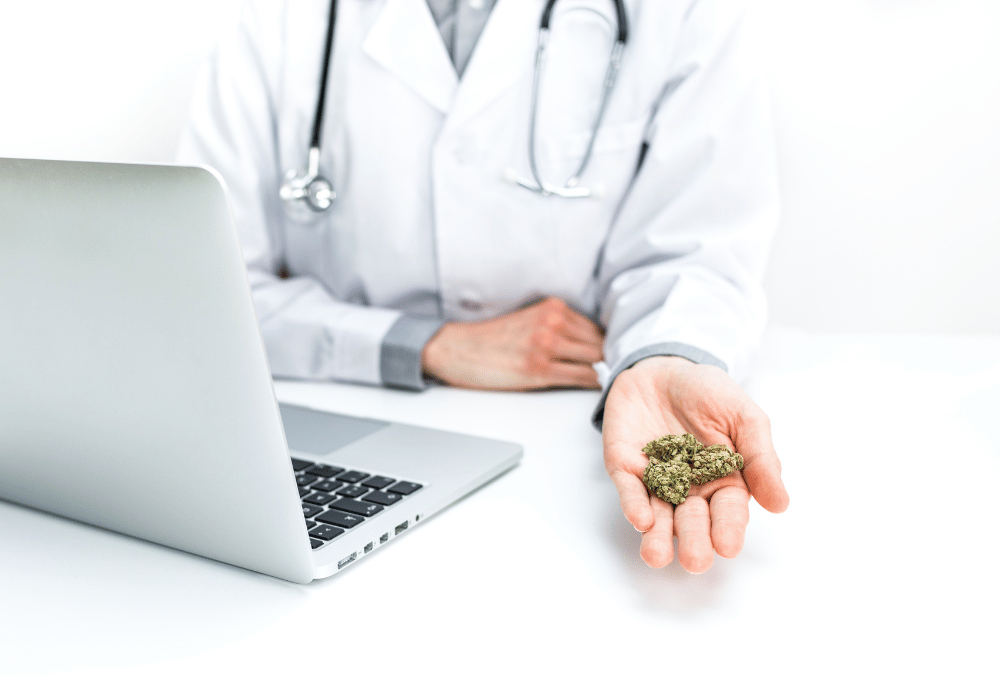Medical cannabis is emerging as a critical treatment option for a variety of health conditions, from chronic pain to epilepsy. With its growing acceptance and legalization across regions, you may have heard the term “medical-grade cannabis” in discussions. But what does “medical grade” actually mean, and how does it differ from other types of cannabis? This blog explores the criteria, standards, and benefits of medical-grade cannabis so you can better understand what sets it apart.
 Defining “Medical-Grade” Cannabis
Defining “Medical-Grade” Cannabis
First, it’s important to clarify what “medical-grade cannabis” does and doesn’t mean. At its core, the term refers to cannabis grown, processed, and monitored following strict medical and regulatory standards. These standards ensure the product is both safe and effective for therapeutic use.
However, “medical-grade” is not a legal term in every jurisdiction. While many regions have regulations governing medical cannabis, the definition and enforcement of these standards can vary. This means customers and patients should look beyond the label to find out whether the product lives up to its claims.
Medical-grade cannabis differs from recreational cannabis primarily in its purpose. While recreational cannabis is intended for general enjoyment, medical cannabis is cultivated specifically for health benefits, often focusing on consistent cannabinoid profiles and the absence of harmful contaminants.
Key Criteria for Medical-Grade Cannabis
1. Lab Testing for Purity and Potency
A hallmark of medical-grade cannabis is rigorous lab testing. Reputable producers subject their products to third-party laboratory testing to ensure they meet key safety and quality metrics. Here’s what labs typically look for:
- Potency: Levels of THC (tetrahydrocannabinol) and CBD (cannabidiol) must be accurately measured to ensure consistent doses. For patients, this predictability is essential.
- Contaminants: Labs check for mould, mildew, pesticides, and heavy metals, as consuming contaminated cannabis can pose serious health risks.
- Terpene Profiles: These aromatic compounds contribute to the therapeutic properties of cannabis and can determine its effects. Patients benefit from detailed terpene profiles tailored to specific conditions.
2. Stringent Quality Control
Medical-grade cannabis follows more stringent quality control practices than its recreational counterpart. These include:
- Handling in sanitized environments to avoid microbial contamination.
- Controlled drying and curing processes to preserve potency and flavour without risking mould.
- Secure packaging that maintains freshness and includes detailed labeling with cannabinoid breakdowns, dosage guidance, and batch numbers.
3. Expert Cultivation Practices
The way cannabis is grown also plays a vital role in determining its medical value:
- Indoor Growing for Precision: Medical cannabis is often grown indoors, allowing growers to control every aspect of the environment, including humidity, light, and nutrients.
- Organic Practices: Many producers lean towards chemical-free cultivation to avoid residues and ensure cleaner products.
- Repeatable Results: Strains are selected and grown for consistency, ensuring patients receive the same therapeutic experience with each use.
Regulations and Standards: The Need for Consistency
The term “medical grade” should ideally signify compliance with established regulations and consistent quality. However, regulations vary widely depending on the region. For example:
- Canada requires licensed producers to comply with strict government standards for medical cannabis, ensuring products are free from contaminants and include detailed labelling.
- The United States has a patchwork of state-specific regulations, with no overarching federal standard for medical cannabis. This means quality can vary significantly from one producer to another.
- European Union standards emphasize Good Manufacturing Practices (GMP) certification for cannabis used in medicine, ensuring pharmaceutical-grade quality.
One major challenge in the cannabis industry is the lack of global standardization. Universal benchmarks for medical-grade cannabis would enhance patient safety and build trust in the product.
Benefits and Uses of Medical-Grade Cannabis
Medical-grade cannabis is sought after because it is tailored to address specific health conditions. Here’s a closer look at its benefits and applications:
 1. Chronic Pain Management
1. Chronic Pain Management
Cannabis is widely used for managing chronic pain, particularly in patients with conditions like arthritis, fibromyalgia, and multiple sclerosis. The balance of THC and CBD in medical-grade cannabis offers pain relief, with minimal psychoactive effects if desired.
2. Epilepsy and Seizures
CBD-dominant strains have shown remarkable efficacy in reducing seizures, especially for pediatric epilepsy. Epidiolex, a CBD-based drug derived from cannabis, is now a recognized treatment for rare seizure disorders like Dravet syndrome.
3. Anxiety and PTSD
Medical-grade cannabis with carefully balanced cannabinoid ratios can help manage anxiety and post-traumatic stress disorder. Specific strains are selected to minimize side effects like paranoia, commonly associated with higher THC levels.
4. Cancer Symptom Relief
Patients undergoing chemotherapy often turn to cannabis to reduce symptoms like nausea, vomiting, and lack of appetite. Its anti-inflammatory properties may also help with general cancer-related discomfort.
5. Sleep Disorders
Certain carefully cultivated cannabis strains are highly effective for treating insomnia, promoting deeper, more restful sleep without the groggy side effects of some pharmaceuticals.
Why Understanding “Medical Grade” Cannabis Matters
It’s clear that medical cannabis isn’t “one-size-fits-all.” Understanding what sets medical-grade products apart can empower patients to make informed choices about their treatments. Here’s why it matters:
- Safety First: Lab-tested, contaminant-free products protect users from potential harm.
- Consistency and Reliability: Knowing the precise cannabinoid content helps doctors and patients fine-tune dosages for optimal outcomes.
- Empowered Healthcare Decisions: Patients can advocate for themselves by opting for products that meet the highest quality standards.
For individuals or caregivers considering medical cannabis, start by researching producers and asking for lab results, detailed labelling, and a clear explanation of cultivation practices. Reliable providers will always prioritize transparency and quality.
With demand growing and the industry maturing, the future of medical cannabis looks promising. Advancements in breeding, cultivation, and product formulation are leading to more targeted therapies. At the same time, ongoing advocacy for global standards and research funding will help address knowledge gaps and ensure greater safety for patients.
Whether you’re a patient, healthcare professional, or simply curious about the industry, understanding what makes cannabis “medical-grade” is essential for navigating this evolving field. By choosing high-quality, regulated products, you’re not just investing in better health outcomes—you’re also contributing to a future where cannabis is a fully trusted and accessible medical tool.

